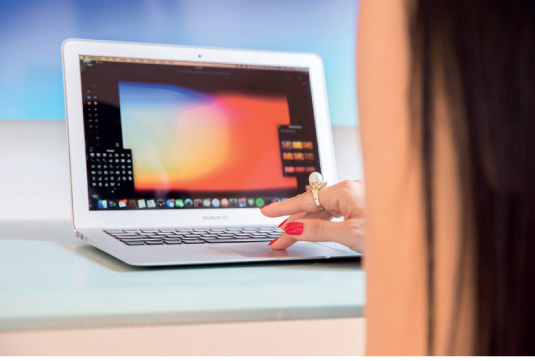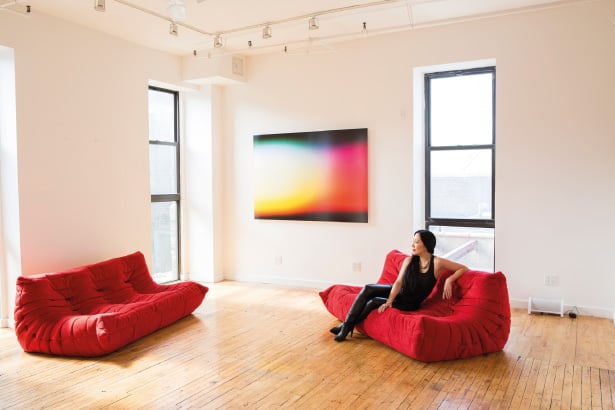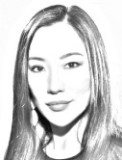How digital art creates a healing space that benefits both patients and staff.
At Paris Healthcare Week, Digital Artist Krista Kim showed healthcare how art, sound and meditation can contribute to healing in her new installation.
Our society is experiencing digital overload; we have become addicted to our digital devices. Capturing moments on our iPhones and posting them on social media to earn “likes” has trumped the actual experiencing of life. As a community, we crave authenticity and self-awareness. But how can we overcome our digital overload?
I believe in the healing and transformational power of light, art and sound frequencies. Digital Consciousness is a video art installation composed of eight artworks with unique dynamic visual meditative experiences, presented with musical compositions with corresponding healing sound frequencies.
Art in the healthcare environment
The stark institutional architecture of standard hospitals is rarely geared towards creating a healing or psychologically-pleasing environment for patients and staff. My installation is suitable for the healthcare space because it is designed to create a meditative, calming and healing experience. This work is for everyone and anyone who is seeking moments of peace.
I wanted to use the light on the screen to create a sublime experience. When I was in Tokyo, I would walk in the middle of the city where there is constant activity and traffic congestion. Suddenly, I would walk into a side street and I would discover a hidden Zen garden and this garden became a vacuum of positive energy. The intention was to create a meditative space, a space of stillness and contemplation, yet just outside the limits of the garden was a bustling city. I marvelled at this phenomenon of the intention to create a space that is meant for mindfulness and I wanted to create that same experience digitally as a digital space. This year I spoke on my digitally-based art at Paris Healthcare Week and found the response from individuals in the healthcare and medical space has been very encouraging. I am currently speaking with architects and developers on upcoming projects so watch this space.
Scientific findings
Our innate preference for a soothing painting or sunny park over a dark alley has a scientific basis. A 2011 University of London study (Ishizu and Teki 2011) found that blood flow increased 10 percent to the "joy response" part of the brain when subjects saw a beautiful painting—just like when you look at a loved one. The findings give credence to what we've always suspected. Leslie Faerstein, Executive Director of Arts and Health Alliance in the U.S. said that visual art has a strong, positive physiological effect on the brain (NBC News 2014).
Building on this premise, the Cleveland Clinic recently found that more than 60 percent of patients reported a reduction in stress from the hospital's contemporary art collection—works produced in the last 30 years, including fine art posters in exam rooms, public sculptures, nature images and abstract designs (NBC News 2014).

Technical background
Five years ago, when I began experimenting with different printing technologies to produce my work, I began my tests in Singapore. Then, digital printing technology was not advanced enough to produce the colour vibrancy and the illumination that I was looking for. It wasn't until 2015 when I discovered a print lab in New York and eventually one in Paris that I could move forward. Printing technology finally caught up with what I've imagined in my mind.
Although my works are printed, they exude a sense of illumination. Many people assume that the pieces are plugged into a wall, when really this phenomenon of illumination and vibrancy and movement in the work is achieved because of the manner in which the printer is able to layer thousands of colours into one small area. This micro layering creates vibrancy and movement that the human hand and a paintbrush cannot achieve. My artwork is a digital translation of the behaviour of light into code and algorithms.
My manifesto is clearly defined by the unique period of history that we are experiencing right now. This is the transition stage of human civilisation from analogue into digital. Because digital disruption has caused immense social isolation, our society needs more spirituality, more mindfulness, more mindfulness for healing.
Key Points
- Healthcare has reported how art can reduce patient and personnel stress and, therefore, promote a healing environment
- Digital light art and sound frequencies can be powerfully soothing
- A zen-like art oasis within a stark hospital setting can be a beneficial stop for everyone in the building









